Alcatraz Island is a former federal prison located in San Francisco Bay, California. It is now a popular tourist attraction that includes a ferry ride, a self-guided audio tour of the prison, and access to areas not otherwise available to the public13.
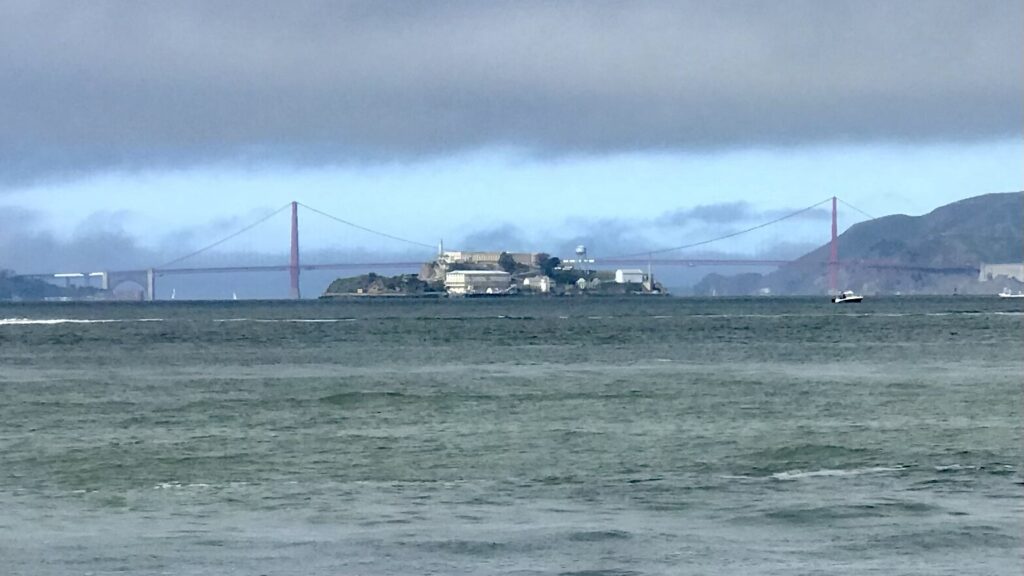
Juan Manuel de Ayala y Aranza was a Spanish naval officer who played a significant role in the European exploration of California1. At the age of 30, he and the crew of his ship, the San Carlos, were the first Europeans known to have entered the San Francisco Bay, having sailed there from the Port of San Blas, Nayarit, Mexico135. Ayala spent 45 days in the bay, mostly at anchor off of Angel Island waiting for an overland expedition, led by Rivera, which was nowhere in sight4.

The San Carlos had always been an unlucky ship with her previous captain having gone mad. Ayala shot himself in the foot with a pistol left hidden in the captain’s cabin and it appeared that the bad luck would continue. But then there was San Francisco. He spent the next few years using the San Carlos, as it had been commissioned, to bring supplies to the Spanish settlements in San Diego, Monterey, and Carmel2. In that time the significance of his expedition became known.

Ayala was born in Osuna, Andalucía, Spain, and entered the Spanish navy on September 19, 1760, rising to achieve the rank of captain by 17821. He retired on March 14, 1785, in his mid 30s on full pay on account of his San Francisco achievements in California1. By means of a launch, his cartographer charted San Francisco Bay. And Ayala had named many of it’s noteworthy features, including Angel Island and Alcatraz.
- Alcatraz Island is not a park, but a historic site and tourist attraction3.
- Tours of Alcatraz Island are available through Alcatraz Cruises, the official provider, and other tour companies. Tickets can be purchased online in advance14.
- The cost of a tour varies depending on the type of tour and the provider. For example, the Alcatraz Day Tour costs $39.90 for adults and $24.40 for children ages 5-11 as of September 20231.
- The ferry to Alcatraz Island departs from Pier 33 in San Francisco15.
- Noteworthy criminals who were incarcerated on Alcatraz Island include Al Capone, Machine Gun Kelly, and “Birdman” Robert Shroud2.
- In 1969, a group of Native American activists occupied Alcatraz Island for over a year to protest the U.S. government’s treatment of Native Americans3.
- The Alcatraz Island Lighthouse is the first lighthouse built on the US West Coast and is located at the southern end of the island near the entrance to the prison12.
- Reservations for tours of Alcatraz Island can be made online through Alcatraz Cruises or other tour companies16.
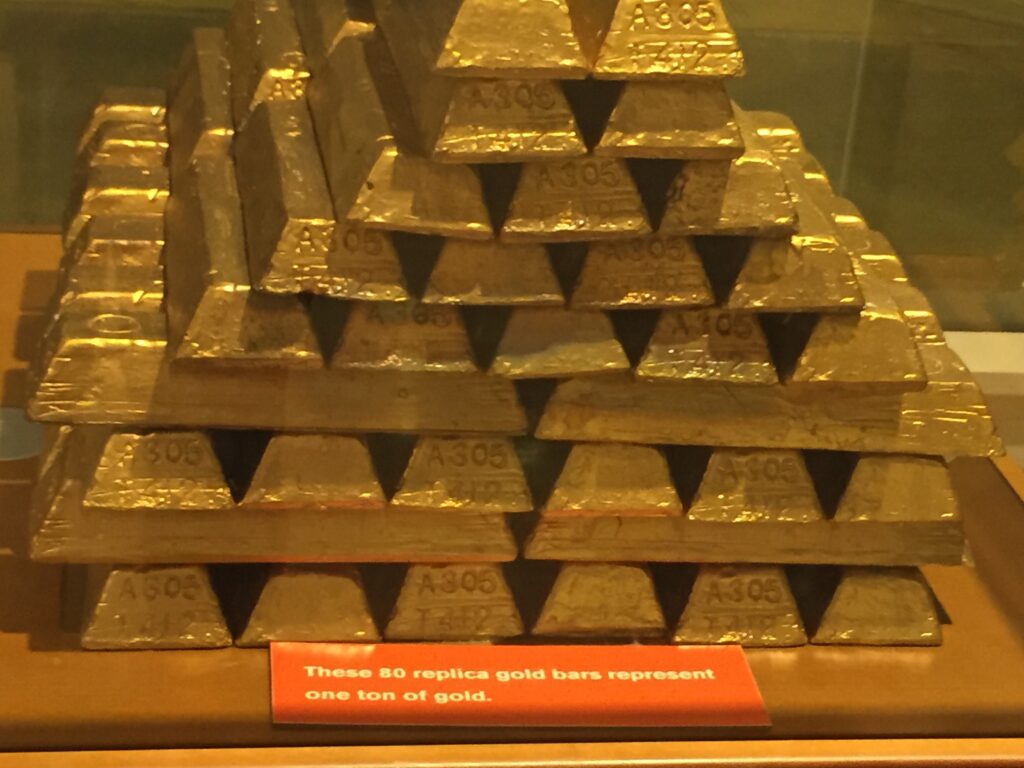
Between 1850 and 1907, Alcatraz was the most powerful fortress west of the Mississippi. The fortress was originally intended to guard against foreign invasion of San Francisco which had boomed during the gold rush.
Alcatraz also played an important role in the Civil War, protecting San Francisco from Confederate raiders.

In 1907, the fortress became an official military prison and in 1934, a Federal penitentiary. Alcatraz ceased to function as a prison in 1963.
Between 1969 and 1971, Alcatraz was occupied by American Indian groups advocating Indian self-determination.
Alcatraz Island is often called one of the most haunted places in the world, but there is no scientific evidence to support the existence of ghosts. However, there are several ghost stories associated with the prison, including:
- The ghost of Al Capone, who is said to haunt the prison’s shower room25.
- The ghost of a prisoner who was killed in the prison’s laundry room25.
- The sound of footsteps and voices coming from empty cells25.

Today, Alcatraz Island is a designated National Historic Landmark for its significant contribution to the nation’s history. It is a popular tourist attraction that offers visitors a glimpse into its fascinating past through a self-guided audio tour of the prison and access to areas not otherwise available to the public12356.
The original dock was completed in 1854, and has been modified and enlarged several times since then.
The lighthouse was originally built in 1854 to guide gold rush shipping into San Francisco Bay. The present concrete tower was erected in 1909. Lighthouse keepers and their families once lived in homes at the tower’s base.
The large four-story building immediately behind the dock was once a military barracks. Its ground floor was built between 1865 and 1867. Designed to house soldiers and cannon to defend the dock, its 10-foot-thick brick walls made it virtually bomb-proof. Along today’s dock, a row of brick gun casemates can still be seen. The restored guard tower is a remnant of the federal penitentiary era. During those years, six towers around Alcatraz were manned by armed guards, whose clear view made escape difficult.
Built in 1857, the Guardhouse is the oldest building on the island. The first line of defense against enemy landing parties, it could only be entered by crossing a drawbridge over a 15-foot deep dry moat. Two gun ports for 24-pound howitzers flanked the entrance, and firing positions for riflemen capped the roof. Alcatraz’s defenses were never tested in battle. Instead, the Guardhouse’s basement served as a prison for troublesome Army soldiers. Later uses included a military prison, library, theater, and schoolhouse.
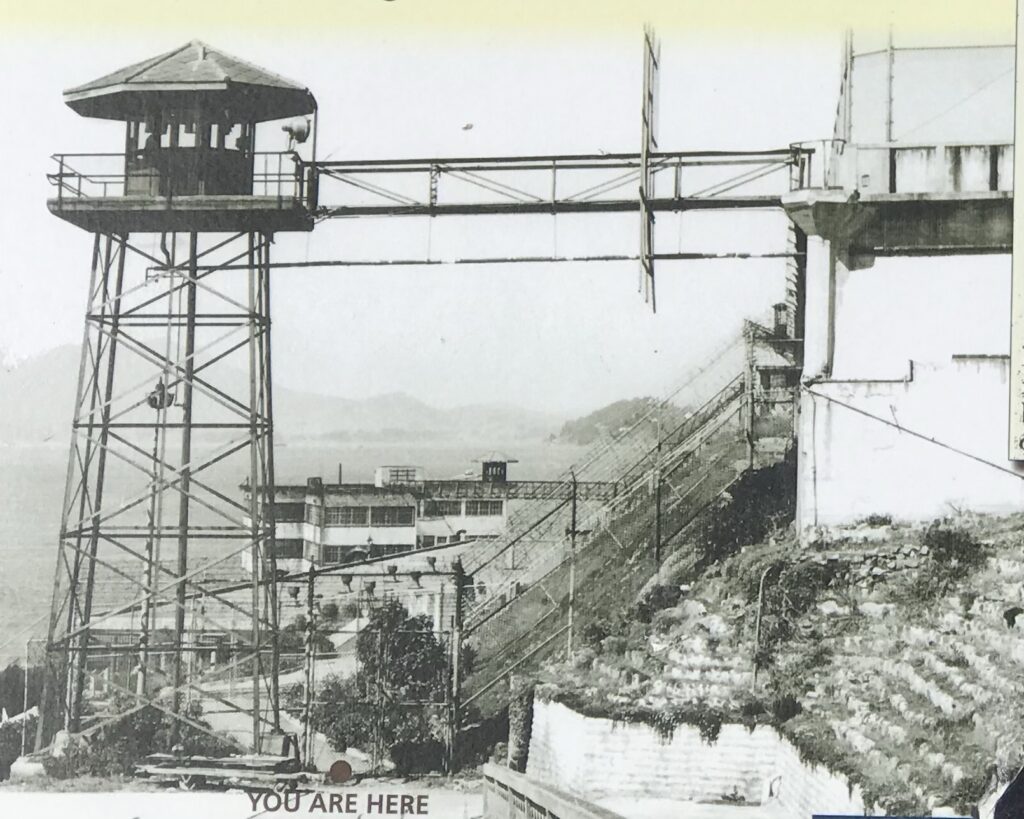
In 1905, the Army used inmate labor to add three concrete, stories on top of the original dock-level brick barracks built., in the 1860s. The finished structure, known as Building 64; served as quarters for soldiers assigned to prison guard duty. In preparation for civilian inmates, the Bureau of Prisons® remodeled the barracks building into apartments for correctional officers and their families. The apartment house included a small market and a tiny post office, During the federal penitentiary era, this end of the island was fenced off for the security of the families.
In 1907, the War Department drew up plans for a new prison building that could house up to 600 Army prisoners. When finished in 1912, the cellhouse was reportedly the largest steel-reinforced concrete building in the world. Unskilled Army inmates largely provided the labor.

The small building on top of the Guardhouse, and Salyport was built by the army in 1917. Designed in the Mission Revival style, the schoolhouse originally held a shoe repair shop and hat factory. Later, it served as a classroom where Army prisoners received grade school education. In 1934, after the military left and federal prison employees arrived, the building was remodeled into housing for bachelor guards.
The wardens house commanded the summit of the island. An impressive Mission Revival-style home, it had seventeen large rooms with sweeping views of the Golden Gate and San Francisco. Built in 1921, it was originally the residence of the military prison commandant. After the island became a federal penitentiary in 1934, it became home to. Alcatraz’s four wardens.
When Alcatraz was chosen as a federal maximum-security penitentiary in 1934, the aging cellhouse was renovated by the Bureau of Prisons. Tool-proof bars replaced the flat, mild-steel cell fronts of the military prison, and gun galleries were built at either end of the cell room. Also, the number of cells was reduced from 600 to 336.
1934-1963 – Alcatraz housed many notorious and famous prisoners, such as Al Capone, Machine Gun Kelly, and “Birdman” Robert Shroud. Many prisoners tried their chances at escaping “the rock” located in rocky and cold San Francisco Bay. Alcatraz was a prison that only housed inmates that were transferred. No judge could sentence anyone to Alcatraz. Only the most difficult prisoners would get sent to Alcatraz. It is what a “super max” prison is today. The average stay of prisoners was 5 years. There were 14 escape attempts by 36 different prisoners. Twenty-three were caught, six were shot and killed, two drowned, and five were never heard from again but thought to have drowned.
1963 – Attorney General, Robert Kennedy ordered Alcatraz closed due to high cost of maintaining prison.
March 21, 1963 – Last inmates leave Alcatraz.
Alcatraz Island
The aging army barracks overlooking the dock, small cottades. and modern apartment houses were built in 1940 with spectac views of the Golden Gate. At the very tip of the island was a duplex occupied by two of the most important people on the island. the associate warden and the captain of the correctional staff. During the 1950s, an average of 75 families lived on the istand at any one time. Dozens of children grew up or Alcatraz and were feried each day to school in San Fancico. Wives and off duty guards look the shuttle boat the city for shopping trips and social events.

Rookery
There is no brown pelican rookery on or near Alcatraz Island. The nearest pelican rookery is on Anacapa and Santa Barbara Islands in Southern California15. The California brown pelican population was classified as federally endangered in 1970 and as endangered by the state of California in 19711. The population plummeted due to the use of the pesticide DDT, which caused the birds to lay thin-shelled eggs that broke easily2. The brown pelican was delisted as a federally listed species in 2009 after its population had recovered16. The population of brown pelicans has increased since the 1970s due to conservation efforts and the banning of DDT26.

Channel Islands National Park
A study conducted in 2006 found that the brown pelican colony on Isla Alcatraz, Sonora, Mexico, had increased by a factor of 2.75 from 2004 to 20064. In summary, there is no brown pelican rookery on or near Alcatraz Island, and the nearest pelican rookery is on Anacapa and Santa Barbara Islands in Southern California. The brown pelican population was classified as endangered in the 1970s due to the use of DDT, but its population has since recovered due to conservation efforts and the banning of DDT.

Today, Pelicans are often seen on the island, but they do not nest on their namesake island. Many other birds do.
Alcatraz Island is a former federal prison turned tourist attraction that offers tours of the prison and access to areas including those that are not otherwise available to the public because of nesting.
Black-crowned night herons and elegant snowy egrets are among Alcatraz’s most picturesque residents. They live in colonies, nesting within the cover of vegetation, including the bushes in this area. They hunt for food in the tide pools and plants at the island’s edge. Since night-herons arrived on Alcatraz in 1980, the number of pairs has fluctuated between 68 (in 2001) and Snowy egret chicks in nests and 341 (in 1996). The colony is one of the largest in the Bay Area and is well established in nearly a dozen locations on the island, mostly on the southern end, in the agave plants. The first of Alcatraz’s snowy egrets (79 pairs in 2007) arrived in 1997.
Where else are you likely to see a snowy egret in à fig tree. on an island… in the shadow of a notorious prison? Even it you don’t see’an egret hidden in the shrubs. vou might hear them. During spring and summer months, if you get too’close to their nests, they will let you know by shrieking loudly at you! They are trying to protect their young

.
Snowy egrets were hunted almost out of existence in the, 1920s because of their plumage was prized for women’s hats. The National Audubon Society was founded in response to the near extinction of the snowy egret. The Golden Gate Audubon Sodety works with the park to educate visitors*
Noteworthy criminals were incarcerated on the island, and there was a protest by Native American activists in 1969. Tours can be booked online in advance through Alcatraz Cruises or other tour companies.
Who were Al Capone, Machine Gun Kelly, and “Birdman” Robert Shroud? What films have been made about them and Alcatraz? Why were they incarcerated? What criminals have been compared to them and why? Why was the prison closed?
- Al Capone was a notorious American gangster who was convicted of tax evasion and sentenced to 11 years in prison. He was incarcerated at Alcatraz from 1934 to 1939125. Alphonse Gabriel Capone, sometimes known by the nickname “Scarface”, was an American gangster and businessman who attained notoriety during the Prohibition era as the co-founder and boss of the Chicago Outfit. His seven-year reign as a crime boss ended when he went to prison at the age of 33.
- George “Machine Gun” Kelly was an American gangster and bank robber who was sentenced to life in prison for kidnapping. He was incarcerated at Alcatraz from 1934 to 1951125.
- Robert Stroud, also known as the “Birdman of Alcatraz,” was an American federal prisoner who became an expert in ornithology while serving a life sentence for murder. He was incarcerated at Alcatraz from 1942 to 1959125.
- Several films have been made about Alcatraz and its infamous inmates, including “Escape from Alcatraz” (1979) starring Clint Eastwood, “The Birdman of Alcatraz” (1962) starring Burt Lancaster, and “Al Capone” (1959) starring Rod Steiger24.
- Al Capone, Machine Gun Kelly, and Robert Stroud were incarcerated at Alcatraz for various crimes, including tax evasion, kidnapping, and murder125.
- Other criminals who have been compared to Al Capone, Machine Gun Kelly, and Robert Stroud include John Dillinger, Bonnie and Clyde, and Charles “Lucky” Luciano. They were all notorious gangsters and bank robbers who operated during the same time period36.

Machine Gun Kelly is best known for kidnapping Charles F. Urschel, an oil tycoon, in 1933 and collecting a $200,000 ransom.
The prison was closed because the operating expense of the prison was becoming too high, and the prison was deteriorating and in need of costly repairs23. Alcatraz was replaced by a new prison in Marion, Illinois, which was designed to house the most dangerous federal prisoners5.

Robert Franklin Stroud, known as the “Birdman of Alcatraz”, was a convicted murderer, American federal prisoner and author who has been cited as one of the most notorious criminals in the United States. During his time at Leavenworth Penitentiary, he reared and sold birds and became a respected ornithologist.Wikipedia
The closest prison to Alcatraz that is still in operation is the San Quentin State Prison, which is located in Marin County, California, about 12 miles north of San Francisco1. San Quentin State Prison is a maximum-security prison that houses some of California’s most dangerous inmates2. It is the oldest prison in California and has been in operation since 18522. The prison is known for its high-security measures and has been the site of several executions over the years2. San Quentin State Prison is not accessible to the public and does not offer tours3.

Work was a privilege on Alcatraz, and most inmates labored five days a week at menial jobs such as making military uniforms and refinishing furniture. Convicts worked in two large factory buildings separated from the rest of the island by double fences topped with barbed wire.

The three-story building at the tip of the island was called Model Shop because it was designed to serve as a “model” of rehabilitation for prisoners. Built by the Army in 1922, it contained carpentry, plumbing, and blacksmith shops. The long two-story building, known as New Industries, was constructed by the Bureau of Prisons in 1940 and served as a laundry, dry cleaning plant, and tailor shops.
Describe fully how In 1969, a group of Native American activists occupied Alcatraz Island for over a year to protest the U.S. government’s treatment of Native Americans. Does the Alcatraz tour discuss the occupation? Was it the first protest of its kind?

Here is a description of the occupation:
- The occupation began on November 20, 1969, when 89 Native Americans and their supporters took over Alcatraz Island134.
- The protest was led by Richard Oakes, LaNada Means, and others, while John Trudell served as spokesman1.
- The group lived on the island together until the protest was forcibly ended by the U.S. government on June 11, 197114.
- The occupation of Alcatraz Island served as a strong symbol and uniting force for indigenous peoples everywhere because of the importance the island held in their ancestors’ lives. Indians traveled to Alcatraz about 10,000 years before the Europeans even entered the Bay Area1.
- The occupation was not the first protest of its kind, but it was one of the largest and most significant demonstrations for indigenous rights in the 20th century5.
- The Alcatraz tour does discuss the occupation, and visitors can learn about the history of the occupation and its significance5.

National Recreation Area, which protects over 80,000 acres of historic landmarks and natural resources in the Bay Area.
Several movie stars publicly supported the occupation of Alcatraz Island by Native American activists in 1969. Here is a description of their involvement:
- Marlon Brando and Jane Fonda were among the celebrities who publicly supported the occupation of Alcatraz Island1.
- Brando visited the island in 1969 and donated $1,000 to the cause1.
- Fonda visited the island in 1970 and brought supplies to the protesters1.
- Other celebrities who supported the occupation included Anthony Quinn, Dick Gregory, and Buffy Sainte-Marie1.
- There is a documentary film called “Alcatraz Is Not an Island” (2001) by James M. Fortier that tells the story of the occupation3.
- The film “Trudell” (2005) by Heather Rae also features the occupation of Alcatraz Island and the activism of John Trudell, who served as the spokesman for the protesters5.
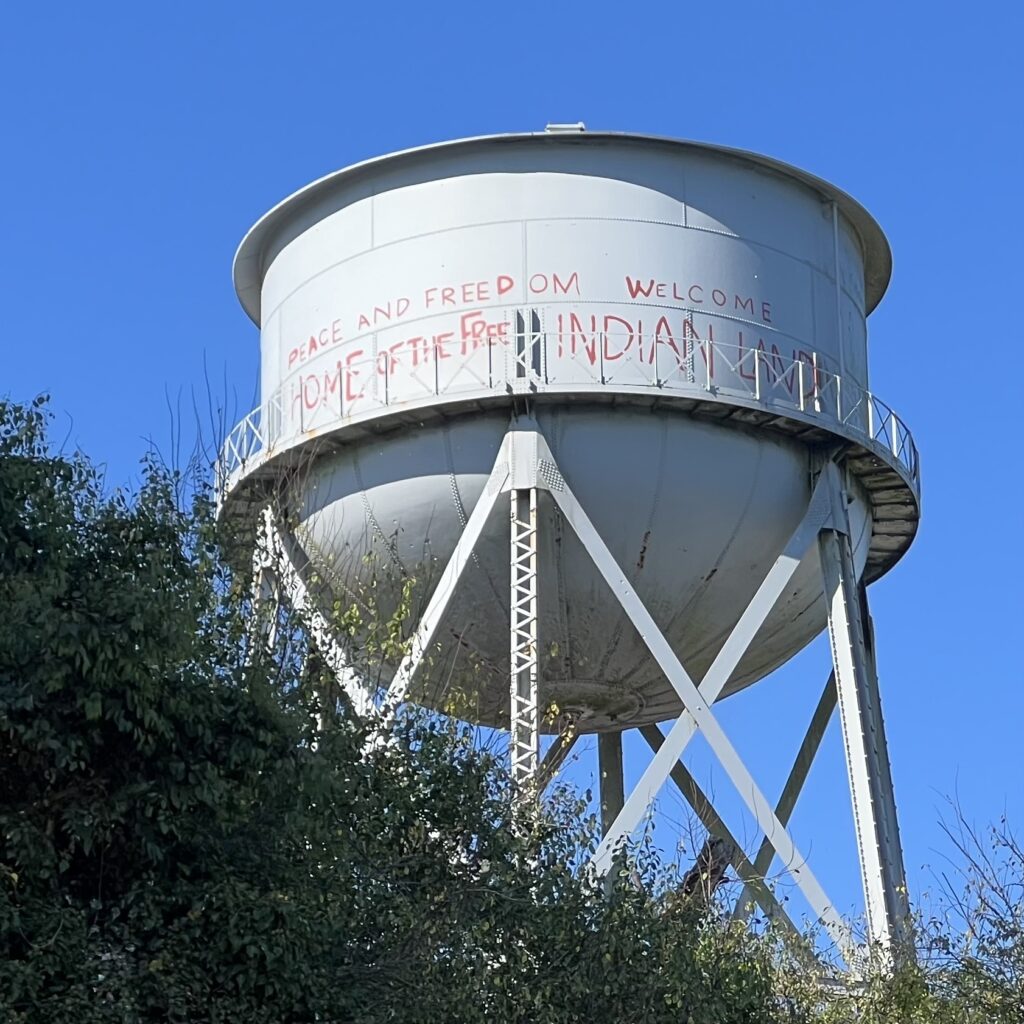
In summary, the occupation of Alcatraz Island by Native American activists was a 19-month long protest that began in 1969 to protest the U.S. government’s treatment of Native Americans.

This November 2023 is the 54th anniversary of the occupation of Alcatraz Island, a 19-month-long protest during which Indigenous people and their supporters demanded that the U.S. honor longstanding agreements with tribes.
Movie stars publicly supported the occupation of Alcatraz Island, including Marlon Brando and Jane Fonda. The occupation was a significant demonstration for indigenous rights in the 20th century and is discussed during the Alcatraz tour. There is a documentary film called “Alcatraz Is Not an Island” (2001) and the film “Trudell” (2005) that feature the occupation.

Is there a light house on Alcatraz Island? What is the history of the lighthouse? Can you visit the lighthouse? Is it part of the Cellhouse Tour?

Yes, there is a lighthouse on Alcatraz Island. The Alcatraz Island Lighthouse is the first lighthouse built on the US West Coast and is located at the southern end of the island near the entrance to the prison12.
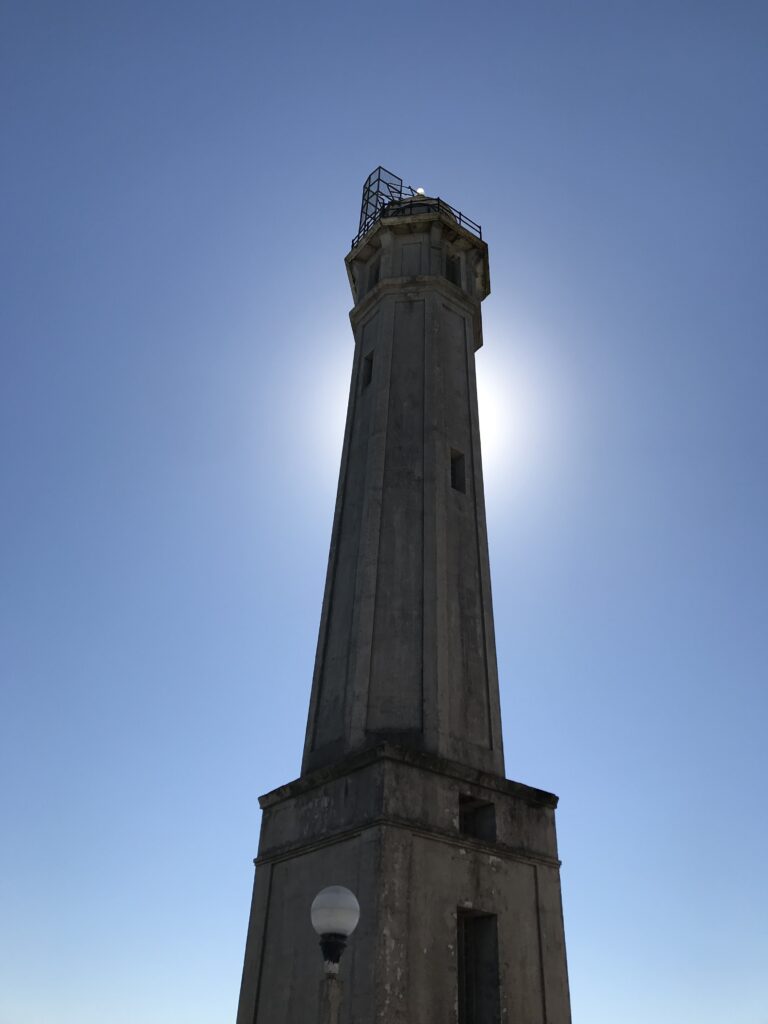
The lighthouse was completed in 1854 and served the bay during its time as a Citadel and military prison24. The Baltimore firm of Gibbons and Kelly was awarded the contract to build seven lighthouses in California, including the one on Alcatraz Island2. The Alcatraz Lighthouse was the first to be completed in July 1853, making it the oldest major navigational light on the West Coast2.

In 1970, a fire destroyed the warden’s house, the keepers’ quarters, and other buildings on the island, but the tall cement tower equipped with a beacon still stands today24. Visitors can see the lighthouse during a guided tour of Alcatraz Island, which can be accessed only by ferry56.
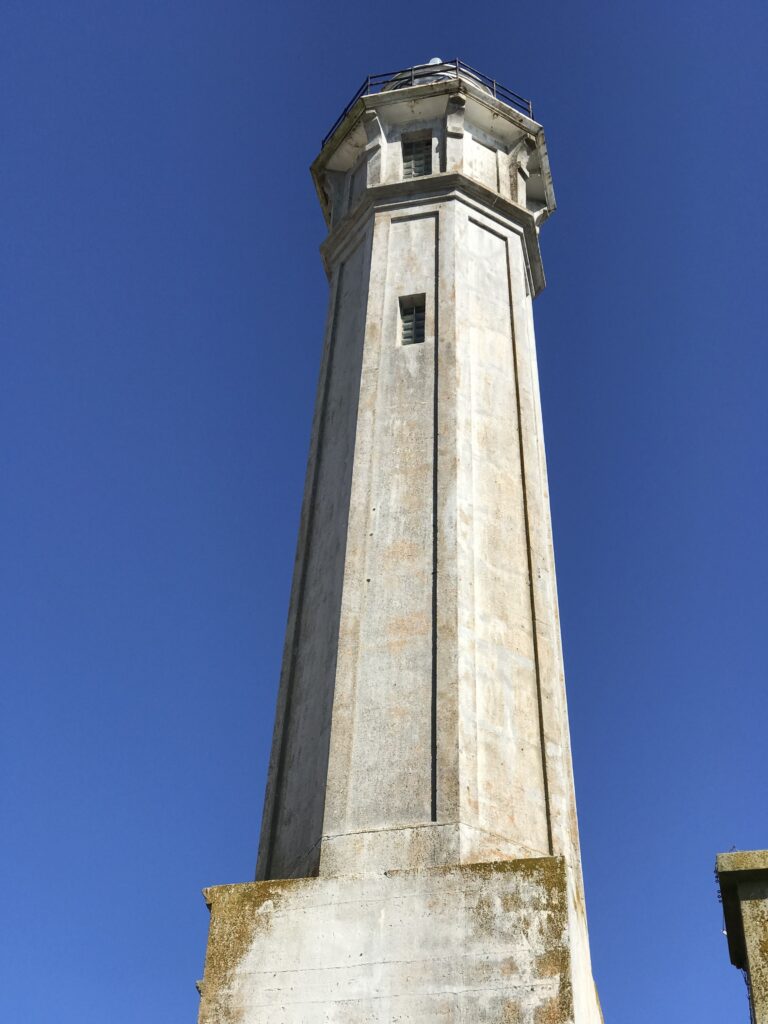
The Alcatraz Lighthouse was automated with a modern beacon in 1963, the same year that the Alcatraz Federal Penitentiary closed135. Today, the lighthouse is part of the museum on the island and can be toured5. The original tower was replaced by a taller concrete tower in 1909, which still stands today1.

The museum at Alcatraz Island is called the Alcatraz Island Cellhouse Tour, and it offers visitors a glimpse into the history of the prison and the lives of the inmates who were incarcerated there. Here are some interesting things to see and do at the museum:

- Visitors can take a self-guided audio tour of the prison that includes stories from former inmates and guards12.
- The museum features exhibits on the history of Alcatraz Island, the prison’s most notorious inmates, and the daily life of prisoners12.
- Visitors can see the prison cells, the dining hall, the library, and the recreation yard12.
- The museum also features a gift shop where visitors can purchase souvenirs and books about the prison12.
Alcatraz Island is often called one of the most haunted places in the world, but there is no scientific evidence to support the existence of ghosts. However, there are several ghost stories associated with the prison, including:

- The ghost of Al Capone, who is said to haunt the prison’s shower room25.
- The ghost of a prisoner who was killed in the prison’s laundry room25.
- The sound of footsteps and voices coming from empty cells25.
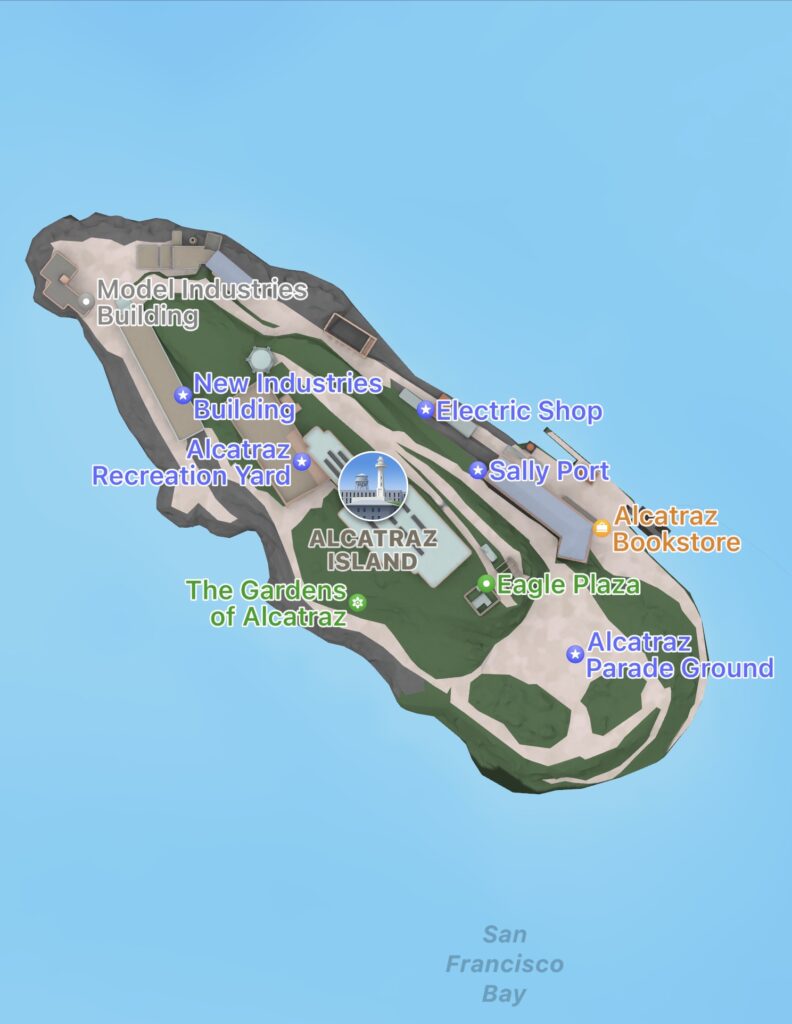
In summary, the museum at Alcatraz Island offers visitors a self-guided audio tour of the prison and exhibits on the history of the prison and its most notorious inmates. While there are several ghost stories associated with the prison, there is no scientific evidence to support the existence of ghosts.
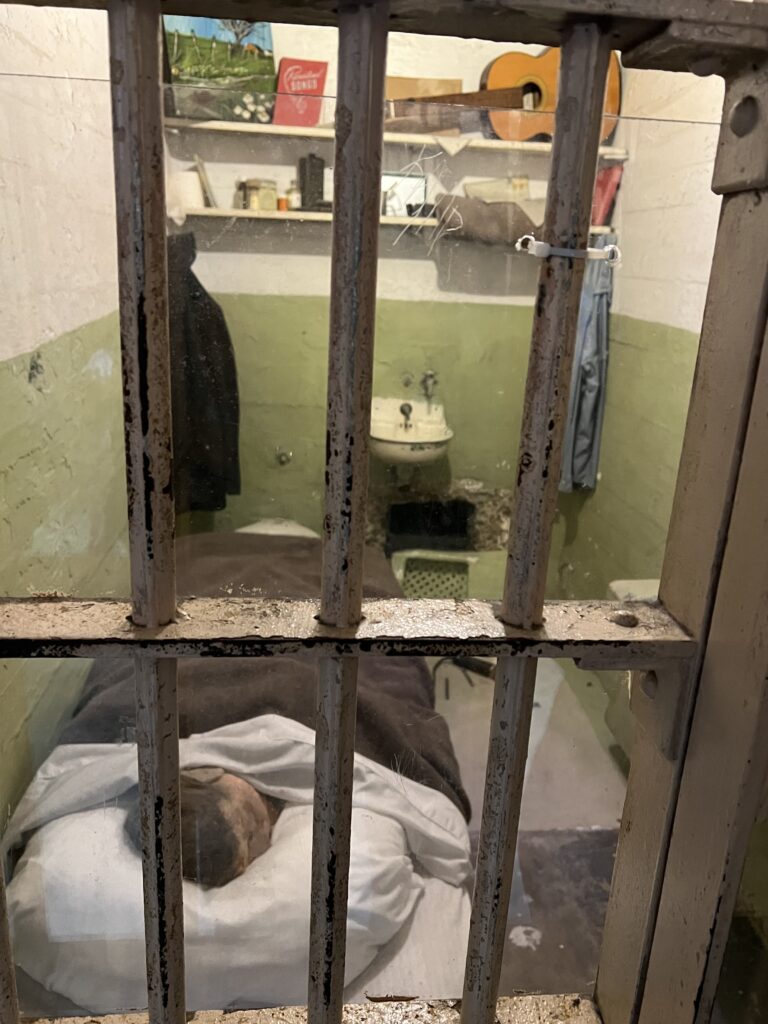
What is the GOLDEN GATE NATIONAL RECREATION AREA? Is the area run by the national parks? In addition to Alcatraz, what places of interest are in the Golden Gate National Recreational Area?

The Golden Gate National Recreation Area is a vast park that stretches across 80,000 acres north and south of the Golden Gate Bridge in the San Francisco Bay Area. It is one of the largest urban parks in the world and is home to one of the world’s largest national parks in an urban setting34.The park is run by the National Park Service2.

The Golden Gate National Recreation Area offers visitors a wide range of activities and places of interest, including:
- Alcatraz Island, a former federal prison turned tourist attraction34
- Muir Woods National Monument, a park known for its old-growth coast redwoods34
- Fort Point National Historic Site, a fort that defended the Bay following California’s Gold Rush through WWII3
- Point Bonita Lighthouse, a historic lighthouse located at the entrance to the Golden Gate3
- Rodeo Beach, a dog-friendly beach with varied trails4
- Mori Point Loop Trail, a scenic trail with ocean views5
- Crissy Field Promenade, a popular spot for walking, jogging, and picnicking5
- Muir Beach, a secluded beach with stunning views5
- Marshall’s Beach, a clothing-optional beach with views of the Golden Gate Bridge5
- Ocean Beach, a popular spot for surfing and beachcombing5

Visitors can also enjoy ranger-led and docent-led programs, camping, hiking, picnicking, and learning about the centuries of overlapping history from California’s indigenous cultures, Spanish colonialism, the Mexican Republic, US military expansion, and the growth of San Francisco1234.

Did Confederate Raiders ever visit San Francisco or the Bay Area?

Alcatraz began as a U.S. Army fort desioned to defend San Francisco Bav against enemy attack. At the height of the Civil war, the fort fied islan
held over 100 heavy cannon. The largest of these were the sleek Rodman guns on iron carriages. (The Rodmans distinctive soda bottle shabe reflected the pressures that built up inside the barrel during firing. Nicknamed affer their invertor, Thomas Jackson Rodman, the guns design and careful manuracture made them verv safe weapons to fire an important feature at a time when many cannon blew up without warnitig. Redmans ranged in size from 8-inch caliber guns uo throuch 15 inch caliber models that weighed nearly 50,000 pounds.
There is no evidence that Confederate raiders ever visited San Francisco or the Bay Area during the Civil War. However, the U.S. government was concerned about Confederate commerce raiders and allocated additional military protection to the San Francisco area3. The Knights of the Golden Circle, a secret organization of “Chivs” with many transplanted wealthy Southern members, was particularly powerful in developing plans for California’s secession from the Union3.

Union commanders relied on the San Bernardino Mounted Rifles and their Captain Clarence E. Bennett for intelligence and help to hold the pro-Southern San Bernardino County for the Union in late 1861 as Federal troops were being withdrawn and replaced by California Volunteers4.

During the war, perhaps twenty percent of California’s population was pro-Confederate, living mostly in southern California, and small groups of pro-Confederates actively tried to rouse anti-Union sentiment, in the hopes of adding gold-rich California to the Confederacy3.
Late in the war, local secessionists in California made attempts to seize gold and silver for the Confederacy4. However, there is no record of Confederate raiders ever invading San Francisco or the Bay Area15.
The military Department of the Pacific greatly increased its West Coast troops to prevent Confederate privateers from attacking and robbing ships carrying gold and silver out of the San Francisco Bay1. The coast of Southern California would have provided the Confederacy with a much-needed open harbor, unaffected by the Union Blockade, but no battles took place on Californian soil3.
The Union Navy could not spare ships to the Pacific coast, but Confederate States Navy warships operated in the Pacific Ocean, and their attempts to buy or seize ships for commerce raiding on the West Coast were thwarted by alert Union officials and the Pacific Squadron5.
Confederate privateers attempted to prey on coastal shipping, and late in the war, two groups of partisan rangers were formed, but neither were successful6. Alcatraz was upgraded to both prevent piracy and to serve as a deterrent for Confederate sympathizers.

The cannon in front of you alreplica 1o inth Rodman«anton, a typical Alcatraz artillery piece of the 1860s An actual Rodman gun and carriage was aimed, loaded and fired by a crew of eight to ten soldiers. The large wheels at the rear allowed the crew to rotate the gun right or left on circular. iron rails. At the moment of firing, the gun recoiled backwards and up the inclined iron side rails. Friction and gravity made it stop. Weight of gun and Carriage 20,500 Ibs: (9298 kilograms) Weight of solid cannonball: 128 lbs (58 kilograms) Range with 15 lbs powder: 2 75 miles (4.4 kilometers)
In summary, while there were secessionist factions in California and the Confederacy was interested in the gold resources, there is no record of Confederate ships attempting to blockade San Francisco Bay during the Civil War123456. Alcatraz was built up both as a prison and a fortress during this time.

Is there a long distance swim from Alcatraz? When does it run. Are there wet suit divisions? Where does the swimming end is the event called swim with sharks?
Yes, there is a long-distance swim from Alcatraz Island to San Francisco.

Here is some information about the swim:
- The swim is approximately 2 miles long13.
- There are several organizations that offer the swim, including Odyssey Open Water, Water World Swim, and Pacific Open Water Swim Co.126.
- The swim is typically held between May and November1.
- The swim is not for novices and is only recommended for experienced open-water swimmers3.
- The swim can be completed with or without a wetsuit, depending on the swimmer’s preference and the water temperature12.
- The swim finishes at the St. Francis Yacht Club in San Francisco1.
- The swimmers enter the water from boats.
- The Alcatraz swim course may have a notorious reputation, but it is considered safe and has been completed by thousands of swimmers over the years36.
There is also an event called the Alcatraz Sharkfest Swim, which is a 1.5-mile swim from Alcatraz Island to the San Francisco Aquatic Park3. The event is typically held in August and is open to experienced open-water swimmers only3.

In summary, there is a long-distance swim from Alcatraz Island to San Francisco that is typically held between May and November. The swim is only recommended for experienced open-water swimmers and can be completed with or without a wetsuit.
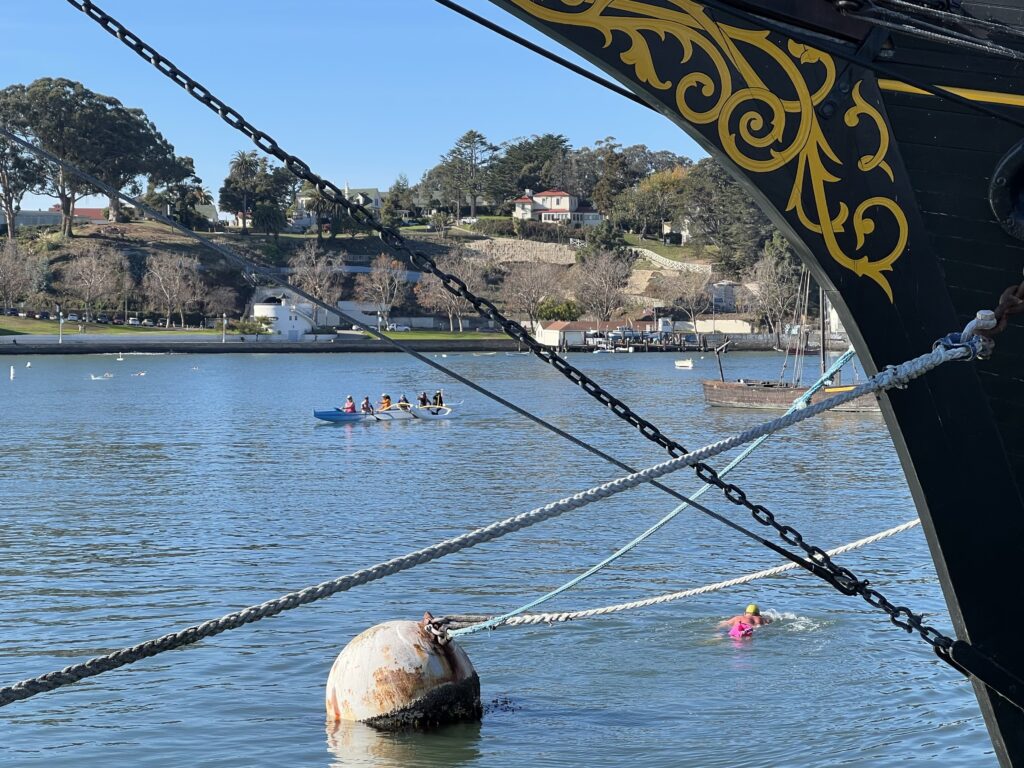
What were the Chicago Beer Wars? What Alcatraz inmates were involved in the Chicago Beer Wars?

The Chicago Beer Wars were a series of violent conflicts between rival gangs in Chicago during the Prohibition era. The gangs fought for control of the illegal alcohol trade, which was highly profitable at the time. The Beer Wars were marked by drive-by shootings, bombings, and other violent acts56.Several Alcatraz inmates were involved in the Chicago Beer Wars, including:
- Al Capone, who was the leader of the Chicago Outfit and one of the most notorious gangsters of the era126.
- Machine Gun Kelly, who was a member of the George “Bugs” Moran gang and was involved in several high-profile kidnappings14.
- Roger “The Terrible” Touhy, who was a rival of Al Capone and was known for his involvement in the kidnapping of a wealthy Chicago businessman14.

In summary, the Chicago Beer Wars were a series of violent conflicts between rival gangs in Chicago during the Prohibition era. Several Alcatraz inmates, including Al Capone, Machine Gun Kelly, and Roger Touhy, were involved in the Beer Wars.

Six feet of stone, a fortress by the sea, A prison for the nation’s worst, a place to be. Ten feet from top to floor, a gate that parts, A home for the weak, a place for broken hearts.

Alcatraz, a name that strikes fear, A place where gangsters shed a tear. Scarface Capone, the most notorious of all, A symbol of law and order’s fall.

Waiting by the window, feet wrapped with the dead,
The last gangster, thoughts in his head. Alcatraz, a deserted holiday, A place where ghosts come out to play.

But there’s more to Alcatraz than meets the eye, A place where art and literature come alive. A daring plan to escape, a story to be told, A place where prisoners’ stories unfold.

Alcatraz, a place of history and lore, A place where the past lives forevermore. A fortress by the sea, a prison for the worst, A place where the weak perish and the strong thirst.

Pelicans soaring high, the island they call home, A fortress by the sea, a place to call their own. Alcatraz, a name that strikes fear, A place where gangsters shed a tear.
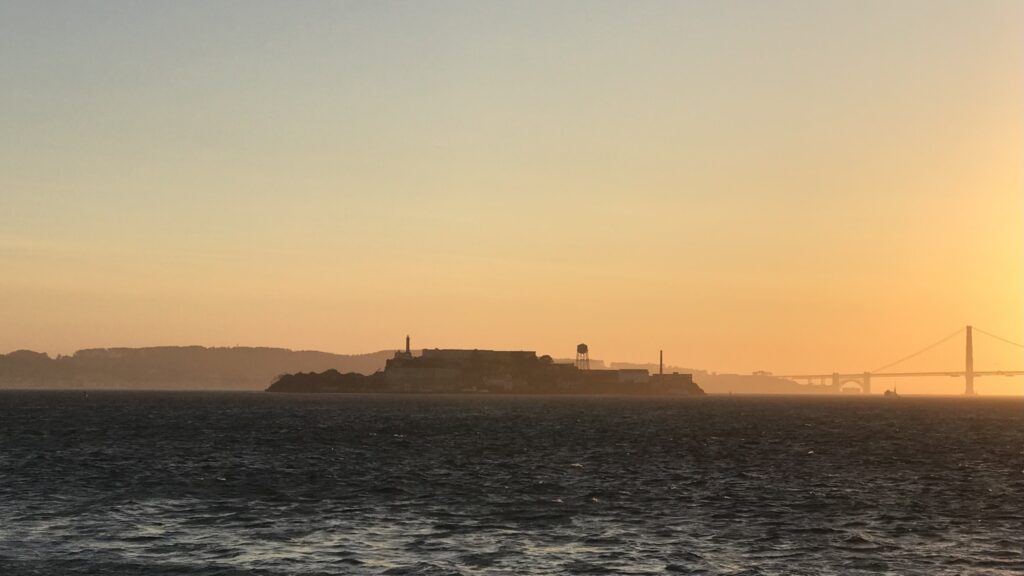
Golden Gate, a bridge that spans, A symbol of hope, a link to distant lands. Confederate privateers, a threat to the coast, A place to imprison them, a place to boast.

Fortifications, a wall of stone, A defense against enemies, a place to call home. Civil War, a time of strife, A place to protect, a place to save life.

Alcatraz, a place of history and lore, A place where the past lives forevermore. Pelicans soaring high, a symbol of hope,
A place where the future and the past elope.
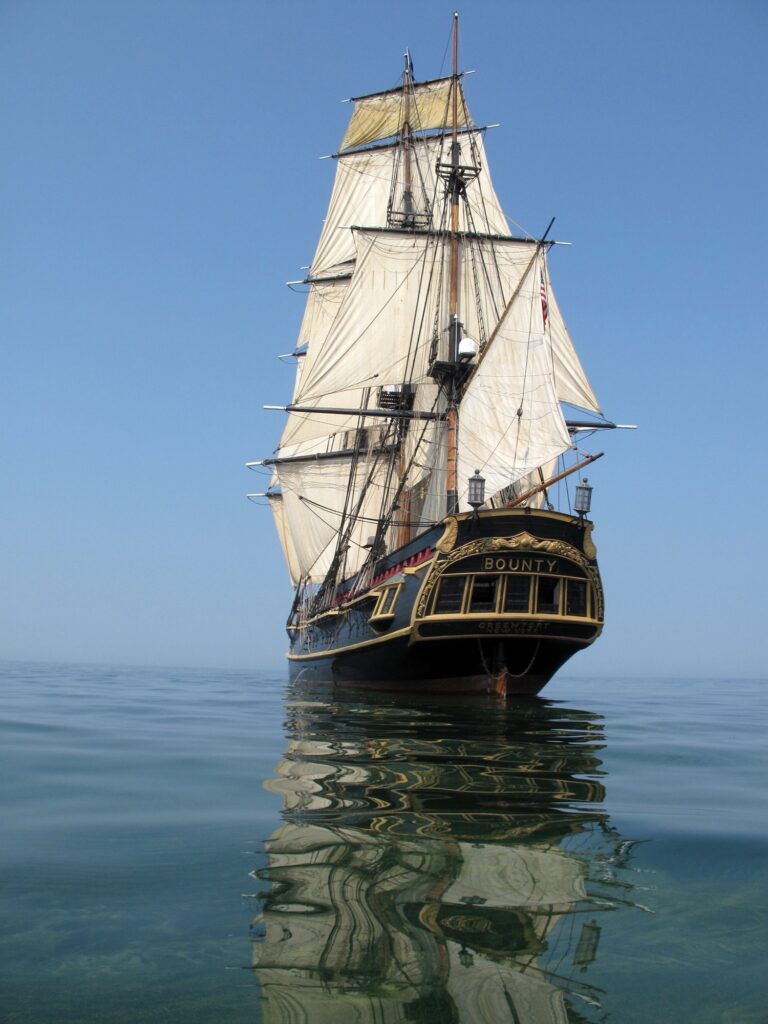
Marlon Brando, a name that rings, A Godfather, a man of many things. A supporter of the Alcatraz occupation, A man of principle, a man of dedication.

Sacheen Littlefeather, a Mexican American, A voice for the oppressed, a woman of conviction. Together they stood, against injustice, A fight for rights, a fight for justice.
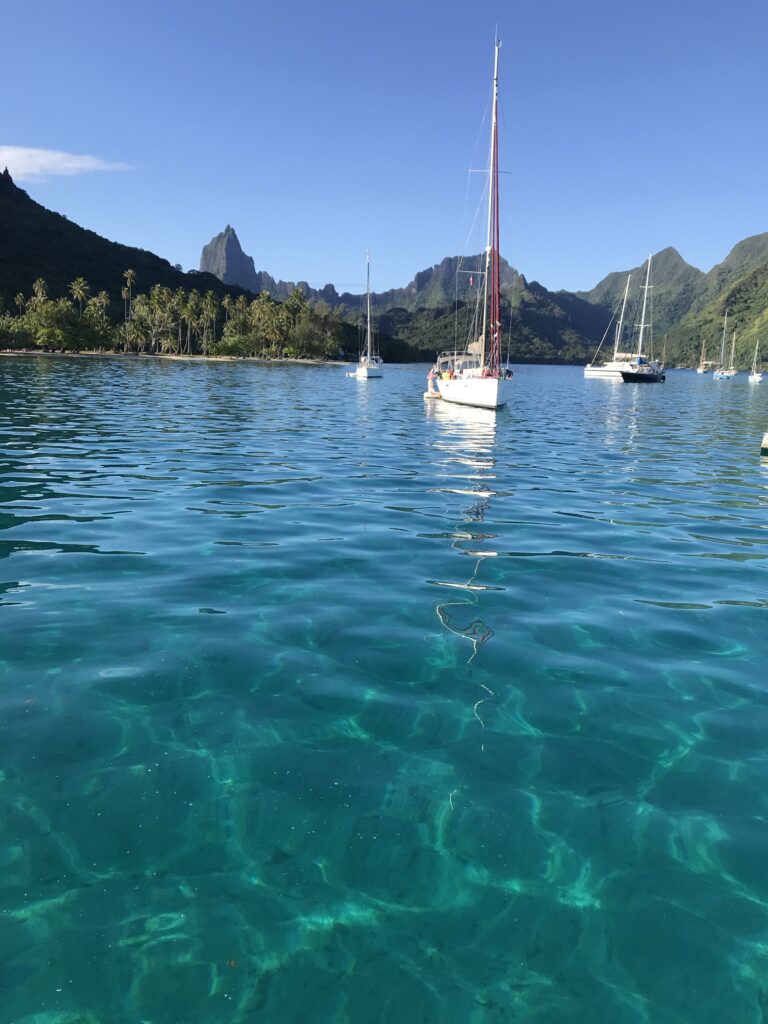
But even after the occupation was done, Marlon Brando could not find happiness, not one.

He moved to Tahiti with his third wife, A place of beauty, a place of life.

But even in paradise, he could not find peace, A man of many demons, a man of unease.

A Godfather, a legend, a man of fame, But even he could not escape life’s game.
In summary, Marlon Brando was a supporter of the Alcatraz occupation and sent Sacheen Littlefeather to reject his Best Actor Oscar for “The Godfather” in protest of the representation of Native Americans. Marlon Brando met his third wife, Tarita Teriipaia, while filming “Mutiny on the Bounty” in 1962, only a few years after the Alcatraz occupation. He moved to Tahiti with his third wife but could not find happiness.
evolving ecological preserve
Salt-laden cold wind, rocky ground, and a scarcity of fresh water originally limited the number and types of plants on Alcatraz.

Covered with the thinnest skin of soil, it supported only sparse grass and a few shrubs. The absence of four-footed predators, however, made Alcatraz a haven for birds, and they built nests and reared their young here in great numbers.

When military development began in the mid-1800s, much of the rock blasted from the surface and sides of the island during the construction of buildings and gun batteries eventually came to rest at its shoreline. This created tide pools that now provide homes for thriving populations of crabs, sea stars, and other marine animals. In turn, these creatures improve the diet of many of the seagoing birds who are recolonizing Alcatraz.
The army also barged topsoil to Alcatraz from Angel Island, piling it around gun emplacements to protect them from incoming shells. This soft dirt provided a base for native California plants, whose seeds had hitchhiked to Alcatraz in the imported soil. The military planted a variety of plants to keep the island’s new surface from sliding or blowing away. As time passed, inmate gardeners and the families of soldiers and correctional officers planted flower and vegetable gardens, bushes, and trees. After the federal prison was closed, the untended plants began to take over-today, they spill out of the gardens original boundaries, over cement walls, and down the slopes.

Modern Alcatraz is an evolving ecological preserve. Now, the plants provide food and shelter for mice, slender salamanders, and insects, which, in addition to the plants themselves, attract birds. Hawks, ravens, geese, finches, and hummingbirds are frequent visitors to the island. Western gull and black-crowned night heron colonies are so active that during breeding season, the National Park Service closes parts of the island to human visitors to protect the birds and encourage their success. Cormorants, pigeon guillemots, and black oystercatchers roost in more isolated sites on the island’s rocky cliffs.
As you walk around the island, you can see traces of ornamental gardens, particularly at the warden’s house and on the western slope below the cellhouse. In 2003, the Golden Gate National Parks Conservancy, National Park Service, and Garden Conservancy began a collaborative effort to preserve and restore the island’s historic gardens. Volunteer crews now work with Parks Conservancy staff year-round to maintain them.
The island once had children’s gardens as well. According to a former resident, in the 1950s, the Captain of the Guards felt Alcatraz’s youngsters had too much time on their hands.
To remedy this, he directed them to plant their own small gardens along the edge of the employee housing area on the southern end of the island. Though these modest gardens are long gone, they no doubt linger in the memory of those who planted them.

How to get to Alcatraz
To get to Alcatraz Island from Richmond, you can take the Richmond Ferry Route to Downtown San Francisco and then take the Alcatraz Island ferry from Pier 33 Alcatraz Landing.

The ferries run daily between 8:40 AM and 4:50 PM, with additional night tours on Tuesdays through Saturdays at 5:55 PM, 6:30 PM, and 7:05 PM.

The return ferries run daily between 9:00 AM and 6:30 PM, with additional night tours on Tuesdays through Saturdays at 4:45 PM, 5:15 PM, 5:55 PM, 6:30 PM, 8:25 PM, and 8:55 PM148. According to a visitor’s review on TripAdvisor, the smell of bird guano on Alcatraz Island is terrible2.

However, the smell is not present all year long and is more noticeable during the nesting season6.

Alcoholic beverages are not allowed on Alcatraz Island, but they are available for purchase on the return trip from Alcatraz Island3. Smoking is only permitted in designated sections of the dock7.




One thought on “Alcatraz Island”